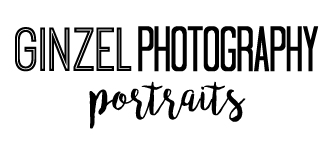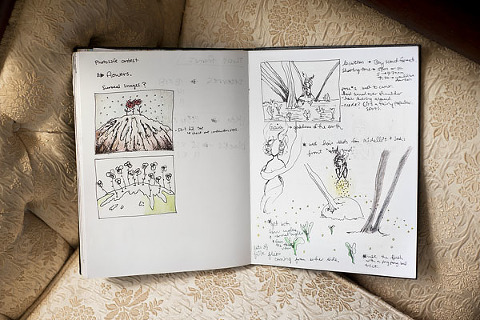Furniture Makeover: Chalk Paint edition
Get ready for an incredibly rewarding, albeit difficult project!
I remember the exact moment when I decided to expand my wedding DIY projects to include painting furniture. A friend of mine was getting rid of a bunch of things in his garage, he sent me photos and one of them was of this stunning antique dresser. It was the exact thing I was looking for to use as a display table for our desserts! To say that I was happy would be an understatement! I was looking for awhile and couldn’t find anything within my budget. It needed some work, but I was fully willing to put the effort in especially since he refused money.
Once I started refinishing furniture, I couldn’t stop! It was so fun! From the dresser, I collected a few shutter doors, a desk, a chair, stools, and 2 shelves.
I applied the same treatment to all of them so this experience and tutorial will cover anything that you want to refinish with chalk paint too!
Before attempting this project, I read some tutorials myself, and was glad to find out that painting with chalk paint allowed for a lot less prep work. I recently finished staining our wooden hand rail in our house, and wow. It was extremely tedious. I wasn’t sure where painting fell on that spectrum, but was thrilled to find out chalk paint is quite lenient.
Which simply means, you don’t have to go crazy with the sanding as you would have needed too using regular furniture paint or stain! Yay!
I purchased Rustoleum Chalked paint. The can mentions that you don’t necessarily need to prime. I would suggest you do it anyway. Depending on the wood, or if there’s some sort of seemingly invisible stain, it will seep through the chalk paint and wreak havoc on your hard work. I had this happen to me. And chalk paint is not cheap and the can is not that big. You don’t want to have to buy anymore than you absolutely need to. For the primer, I used Kilz Premium mostly because that’s what we already had. It did the trick for me but I have heard that nothing ever gets past Zinsser Cover Stain.
I also purchased the Rustoleum Chalked Top Coat. It says it’s “clear”….. It’s not. It does change the tone of white from a bright white to a more antique look. If you really want it white, think about maybe not using a topcoat or look into another option.
Throughout the different tutorials I was reading, it seemed most people were using brushes to paint with. I decided to go with that, but also picked up some sponge rollers *just in case. I was very glad I had them because, sure enough the brush did in fact create a lot of texture that I didn’t want. The technique I ended up using was; paint first with a brush, then use roller to smooth out the texture. I found this way was most successful. Depending on the design of your furniture, the roller won’t be able to reach certain areas so you will need to use a brush anyway.
.jpg)
Step 1 – Sanding
Before painting, even though you’re using chalk paint, I still recommend giving the furniture a good quick sand. There might be flakes of old paint, and other things that would make your project be a little lumpier than it could have been.
**Whenever you sand it, wipe it down before applying another coat of paint.
Step 2 – Primer
When it’s been sanded and wiped down, it’s ready for a coat of primer! One coat should be fine, but check over your project and look for anything that looks like a discoloured spot. That’s a sure sign for future problems. If you notice this. Apply a second coat. If you don’t want any brush strokes, use the brush then roll technique here too.
Step 3 – Sanding (again…& again)
After every coat of paint, you should do a light sanding over the whole thing. Again nothing crazy here, use a finer grain sand paper, like a 220. You don’t want to press too hard and with too rough of paper otherwise you could sand off the paint. Don’t forget another wipe down!
Step 4 – Chalk Paint
After the wipe down it’s ready for a coat of chalk paint! The chalk paint starts drying rather quickly, so I recommend painting one surface then roll it vs painting the whole piece then rolling it. Also! DO NOT overwork the paint. Once you have painted and rolled, fight all urges to “fix” something. It will just make it worse. A successful fix is much more possible after it dries completely, either with a full second coat or just another coat on that surface. I have found that simply doing a “patch” job, usually ends up showing up. So the least you will want to do is paint another coat on one side, or one panel, etc.
Some of my projects I was able to complete in 1 coat, others I had to do 2 coats of chalk paint
After it’s dried give it another sand and wipe down. Repeat this step again if you feel another coat is needed, otherwise move on to the topcoat!
Step 5 – Top Coat
I used the Chalked top coat, even though I wasn’t thrilled about the tone shift. I treated it the same way as painting with the chalk paint except that you’ll want to make sure you are getting a complete coverage because you will see where you missed spots. I also found that it tended to create these tiny bubbles. Most of the time they did disappear, but occasionally they dried that way. I ended up fiddling around with it and found that if I gave it a quick brushing again after (without additional paint), it seemed to pop them without causing any other issues. Something to keep in mind if this also happens for you.
Then you let the top coat dry and you are officially done!
MOST of my projects were a simple paint job alone. The beloved dresser though, this was a little trickier. All of the dresser handles were painted and it basically looked like a disaster, so I stripped them all!…. I made that sound like it was easy… It wasn’t.
It took hours removing the paint. But it looked so much better after.
To complete this I used Hierloom Max Heavy Duty Stripper, a stiff bristle tooth brush, a needle (to get into the tiny details) and gloves.
The stripper is a gel one, so you can apply it and let it sit on it for awhile. This is what I did and I found it worked better if it sat for awhile, BUT. Not too long. If it starts drying then the paint will dry too. I’d say wait about 15 min, then scrub the #$^& out of it. Use the needle if the brush won’t scrape out the paint in little cracks. After it’s been wiped down, apply the stripper again if you need too.
Keep it up until it’s done!
**PS; if you are converting a mirror or any of your furniture pieces into a chalkboard as well, stay tuned for my chalkboard tutorial!
What are you working on? I’d love to see a before and after!






Awesome! So inspiring!
Thanks Alejandra! It’s so much fun! If you try anything I’d love to see what you make you’re so creative too!